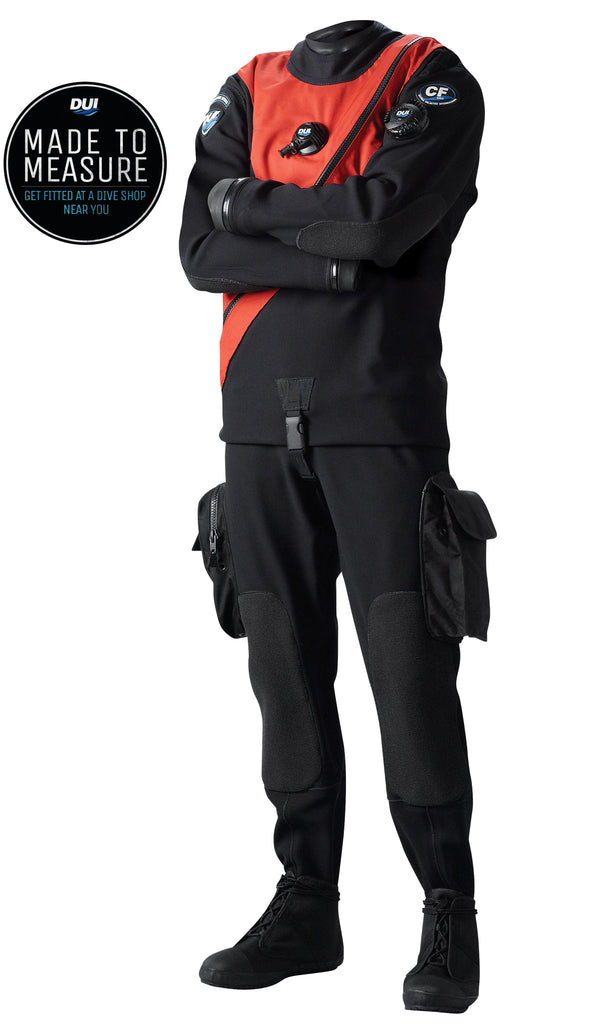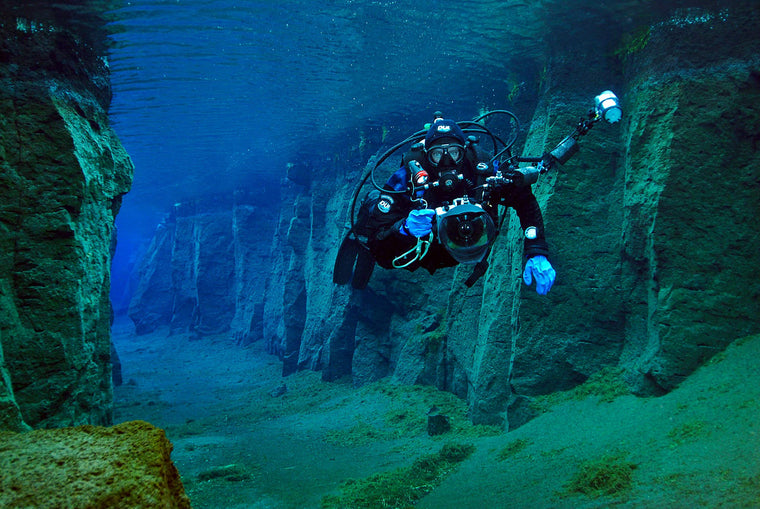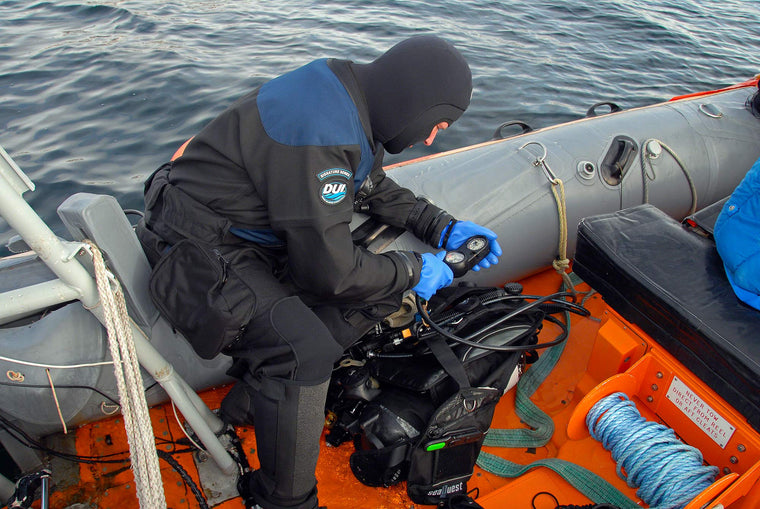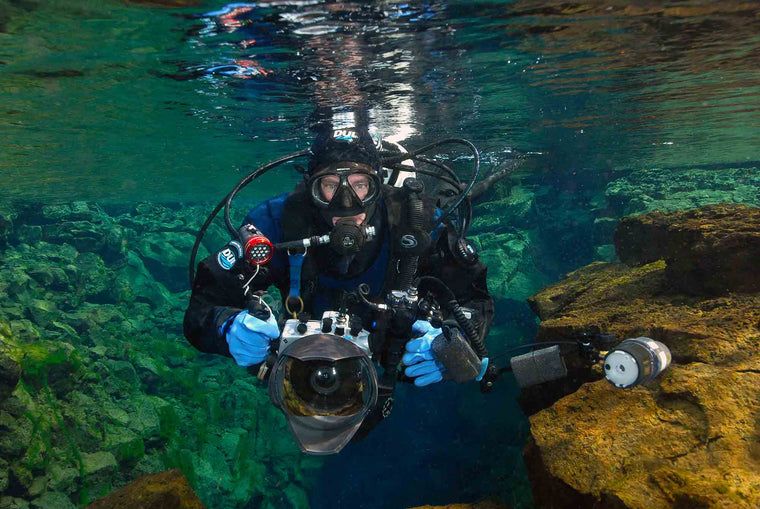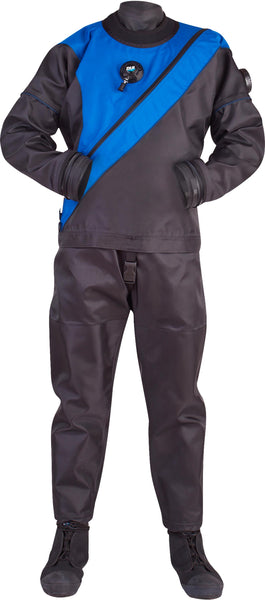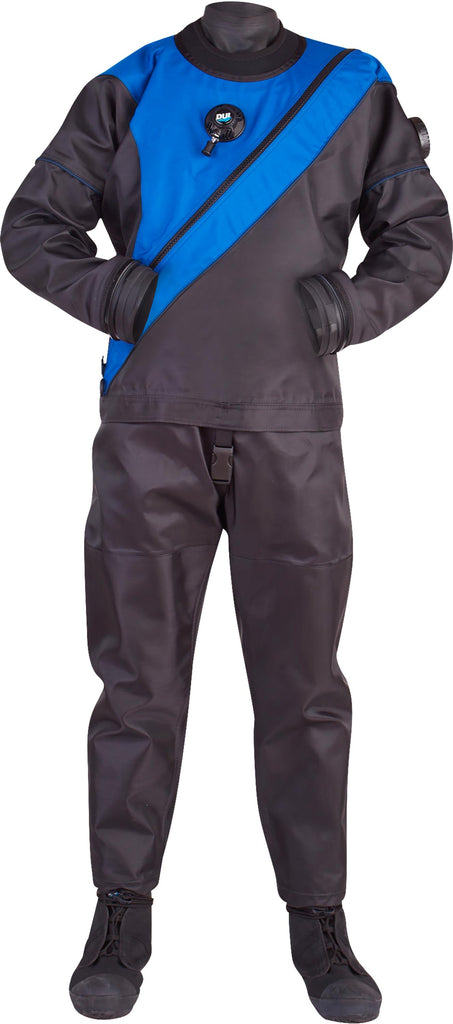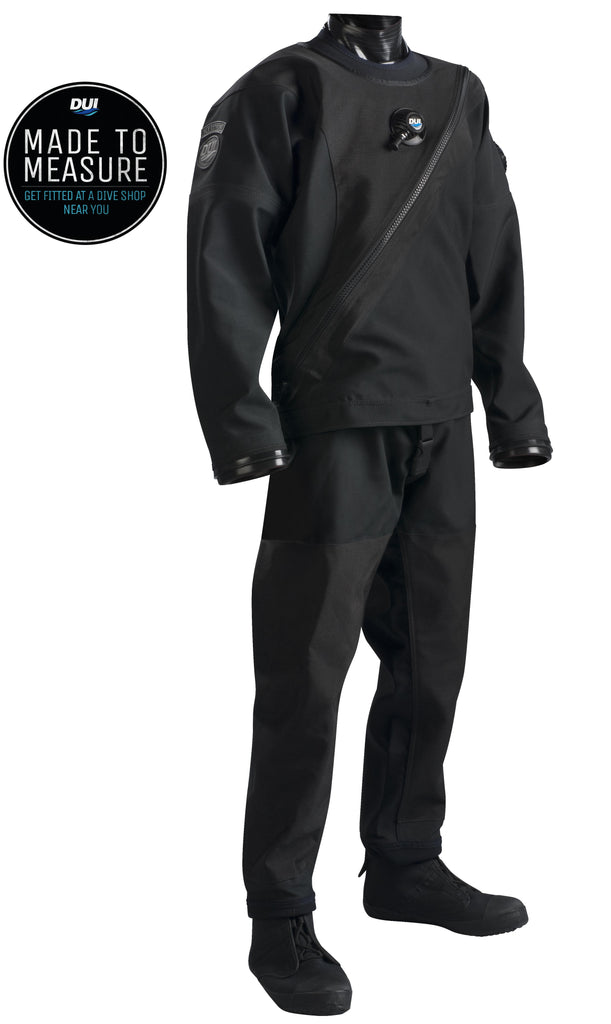CF200X DRYSUIT DETAILS
The CF200 is the standard to which all other drysuits are measured.
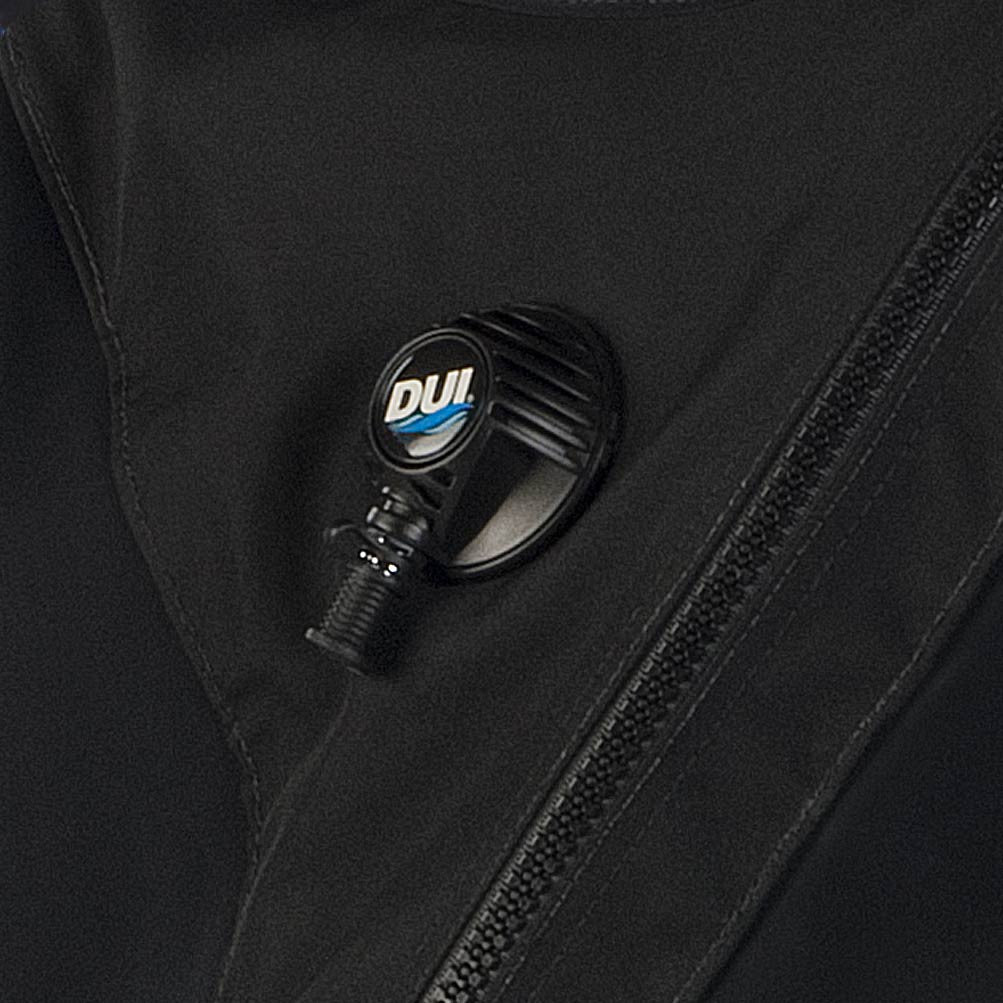
SWIVEL INLET VALVE
Rotation is a key feature of this valve to meet the diver's personal hose configuration. The Drysuit Inflator Valve is designed to rotate 360 degrees for flexibility.
• Rubust and reliable inflation valve features an extra large recessed push-button allowing easy operation.
• The smooth backplate gives protection from uncomfortable pressure loads and prevents cold air blasts through underclothing.
• Rotation is a key feature of this valve to meet the diver's personal hose configuration.
Material: Crushed Neoprene
Q: Why do you use crushed versus compressed neoprene in the CF200X drysuit?
A: The effects of time and the repeated changes in pressure affect any foam neoprene. Within 3-5 years, these materials will lose elasticity and begin to develop leaks as the bubbles rupture into one another.
The lack of bubbles in our crushed neoprene suits, as well as the abrasion and puncture resistance of the material makes it the most durable substance used in the construction of drysuits today. Dive for dive, the craftsmanship and innovation utilized in each and every CF200 make this the least expensive suit per dive to own.
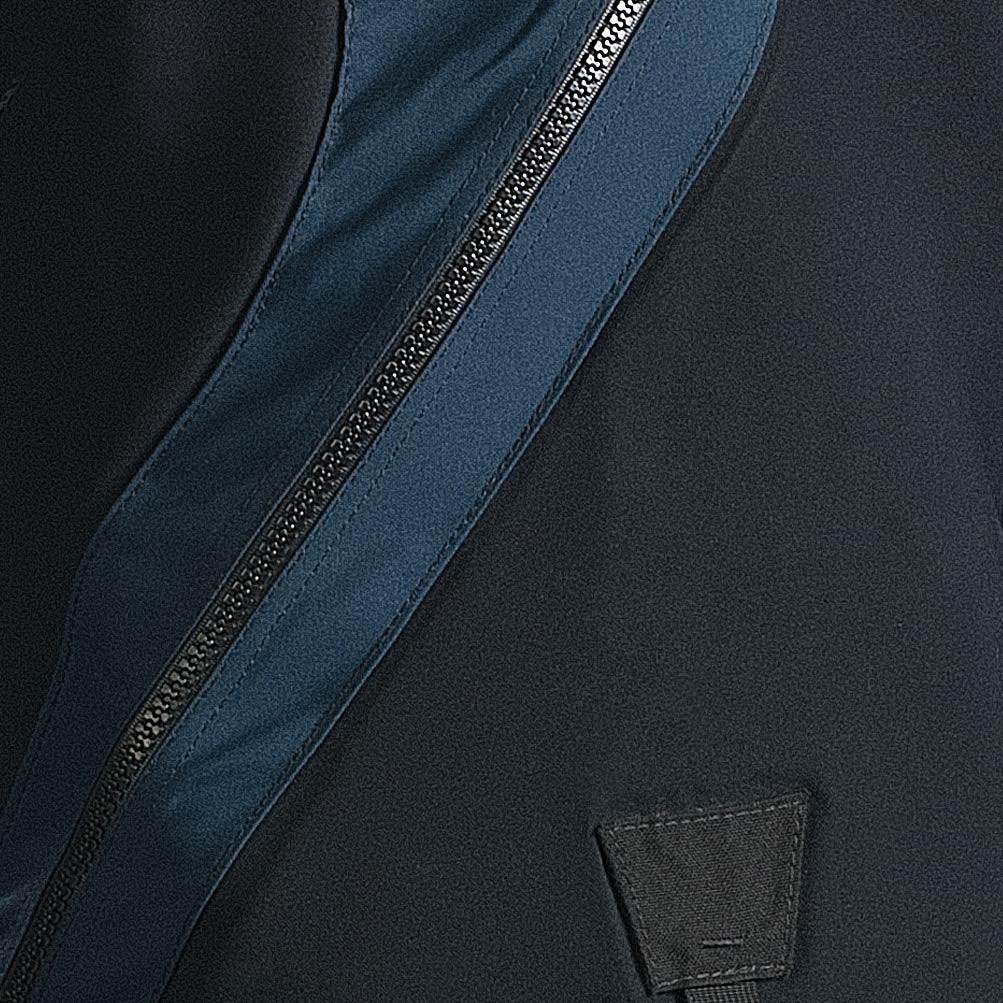
By taking 3mm neoprene and putting it through a rigorous refinement process, we allow the neoprene to off-gas and crush to 1mm. This makes an extremely dense and elastic material which offers the ultimate in protection from the environment. If you put a sample of crushed and compressed materials under a microscope you will find the compressed material still has round bubbles, unlike the crushed material cells are streamlined and flat. This makes the CF200 extremely challenging to penetrate with impressive stretch characteristics.
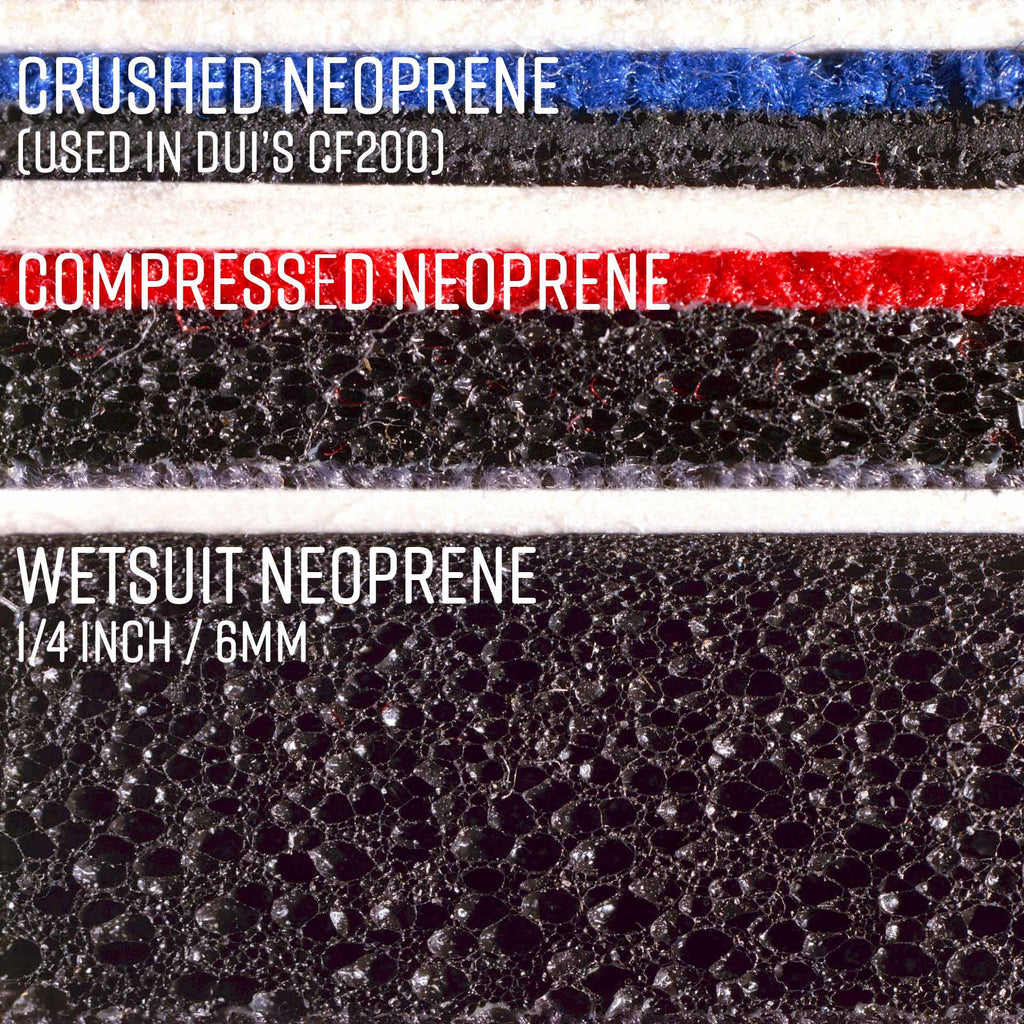
Diver Testimonials
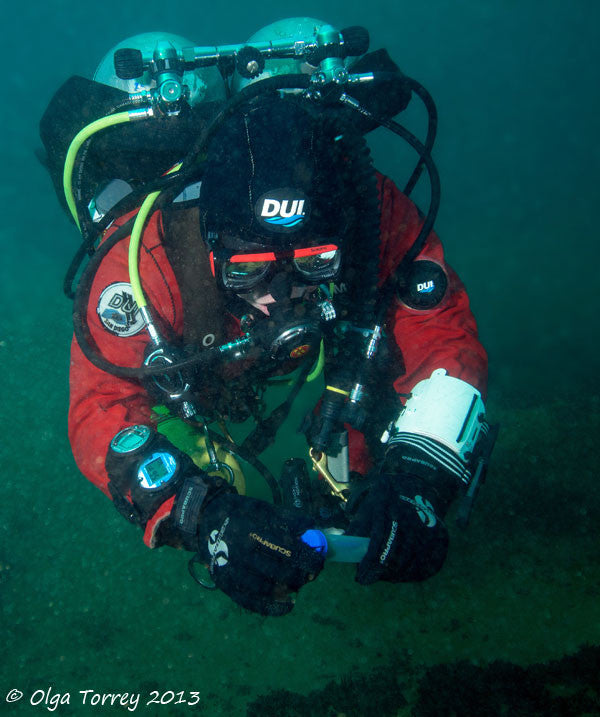
"my favorite
2013 marked my 29th year as a certified scuba diver. Since 1990, I’ve been diving a DUI CF200X drysuit, my favorite. It’s rugged and holds up well to wrecks and caves. Even tight squeezes in Iceland’s jagged lava caves posed no threat to the integrity of the CF200X."
- Bernie Chowdhury | Dive Instructor & Author
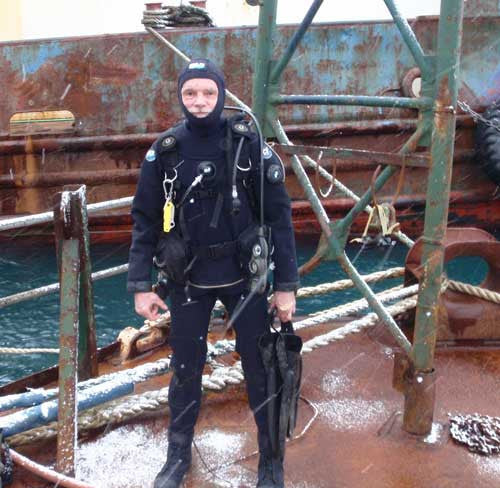
"DUI suits make my underwater journey even more pleasurable.
The suit was nice and comfy in the 37 degree water, and at 30 pounds of lead, I was twenty pounds lighter then the “brand X” 6.5 mil I’ve been borrowing. It’s also much easier to control my buoyancy in my new CF200, making working dives easier and recreational dives more pleasurable."
- Mark Norder | Dive Supervisor
The CF200x In Action
Diving the Silfra fissure in Iceland. Photos courtesy of: Eco-Photo Explorers

